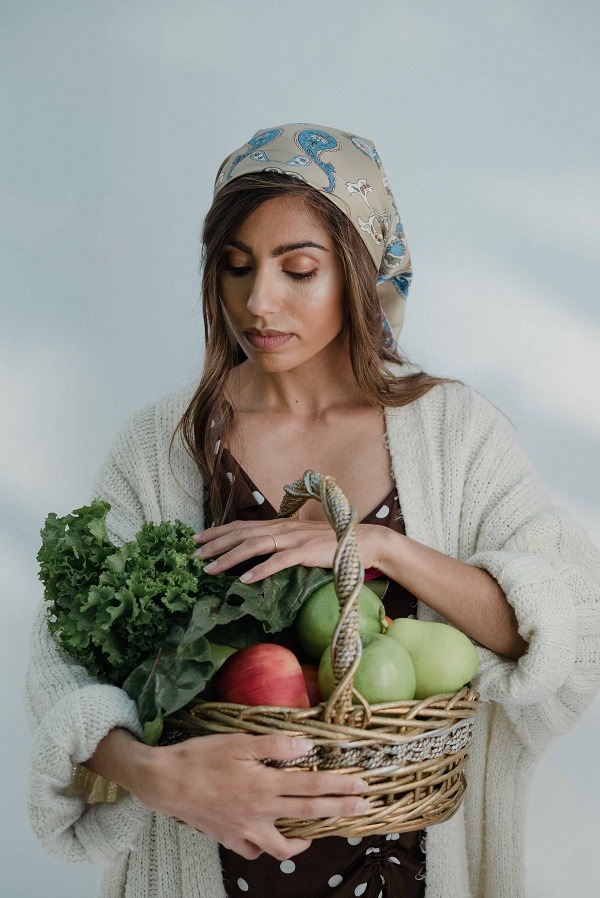
Kitchen Waste? Too Good For The Bin - You Can Still Eat That!
Awesome Life Hacks For A Better World
Written by Adrianna Krueger
Carrot greens, potato peelings, cheese rinds: When cooking, people cut like crazy and the mountain of kitchen waste grows and grows and grows - and then ends up in the garbage. Too bad! Here I give you some ideas on how to recycle supposed kitchen waste.
Around 7.6 million tonnes of food is thrown away in Australia every year – even though it is still edible. That much waste happens across the supply and consumption chain. This corresponds to 312 kilograms of food per capita, equivalent to around one in five bags of groceries or $2000 to $2500 per household, which ends up in the bin for no reason every year.
According to a study by “Welthungerhilfe”, most food in Australia is thrown away because it has passed its best-before date. The reason that many consumers overlook the "best-before" in the name, is that they understand it as a use-by date and then consider the food to be expired. A fatal error! On the other hand, portions that are too large and incorrect quantity planning when shopping are also among the most common causes of large amounts of food being wasted in Australia.
Furthermore, there are leftovers from cooking with fresh fruit and vegetables that end up in the garbage as supposed waste. This is also one of the reasons why nutrition-conscious people often throw away a lot. A paradox that the American nutritional epidemiologist Zach Conrad calculated in a study published in 2018.
Many parts of fruit, vegetables and other foods that often end up in the kitchen waste when cooking are actually too good to throw in the bin and can still be reused. I will introduce you to eight supposed "kitchen scraps" and give you tips on how to process them further.
Root End & Greens Of Leek
The idea that you have to throw away the green part of the leaves when processing leeks persists. Exactly the opposite is the case - especially in the green part, there are many vitamins and minerals! So if you use both parts of the leek, you not only throw away less, but you also eat healthier. The root end is also edible, but most people throw it away carelessly when cooking. The same applies here: Don't throw it away, use it!
Cheese Rind
A classic that always leads to discussions at the dining table is the cheese rind. For many, the question “to eat or not?” causes uncertainty. That's why it is simply removed without further ado - better safe than sorry. There is a simple rule: The rind of naturally matured cheese - this includes, for example, Parmesan, Mountain Cheese or Emmental - can be eaten without hesitation. The special mould cultures used in Camembert or Brie are also edible. However, caution is advised with cheese with artificial cheese casings, i.e. cheese rinds made of paraffin, wax or plastic. Cheese rind that has been treated with the preservative natamycin should also be cut off. These cheeses are labelled "with preservative E235". Moreover, pregnant women and people with a compromised immune system should always remove the cheese rind!
Broccoli & Cauliflower Stems
Many recipes talk about washing and cooking the broccoli florets, but no further attention is paid to the stalk. Instead, it quickly ends up in the trash. Yet, it is no problem at all to eat the stalk. Simply peel, remove the woody parts and cut them into slices and add to the meal. The taste of the stalk is reminiscent of green asparagus. The same applies to the cauliflower stem, which can also be cooked and eaten without any problems. It should be scored crosswise before cooking so that it cooks at the same time as the florets.

Pumpkin skin
If you want to waste as little as possible when cooking pumpkin recipes, you just have to choose the right type of pumpkin. With many types of pumpkin, you can eat the skin! Hokkaido pumpkin and winter squash usually do not need to be peeled. They have a thin skin that is easy to eat. The skin of butternut and nutmeg pumpkin can also be eaten if the pumpkin is cooked for a long time or prepared as an oven vegetable. However, if you only want to cook the pumpkin for a very short time, the skin should be removed first.
Potato Skin
Potato skin can also be easily processed - for example into potato chips! Instead of discarding the peels after peeling the potatoes, place the washed peels on a baking sheet lined with baking paper. With a little olive oil and a few spices, it becomes a delicious snack! Bake in the oven at 200 degrees for about ten minutes – done!
Greens From Radishes, Carrots, Kohlrabi & Fennel
It is not uncommon for the greens of radishes, carrots, kohlrabi or fennel to be carelessly cut off during cooking and then go straight into the organic waste bin. Too bad! Green herbage is not only healthy but can also be processed in many ways. For example, carrot greens make a great substitute for parsley, radish leaves can be used to make a delicious pesto, stuffed kohlrabi leaves make a delicious main course and fennel greens make a great garnish.
Orange Peel
Oranges are particularly popular in winter because of their high vitamin C content. However, usually, only the flesh of the winter fruit is of interest, while the skin is thrown away. Orange peels contain many secondary plant substances and can be processed without much effort - provided they are organic oranges. Dried orange peels can be brewed into tea, or grated they give many dishes a fresh note and in pastries, they provide slightly bitter aromas.
Apple Core
When it comes to the question of how to eat an apple, everyone has their own ideas. A recurring point of discussion is the core of the apple: to eat or not? The clear answer is: Yes! The apple core is safe to eat. The digestive system in particular is happy thanks to the healthy dietary fibre it contains. "And what about the poisonous seeds?" Core opponents will now ask. The assertion that apple seeds contain toxic hydrocyanic acid is not entirely wrong. Apple seeds contain amygdalin, which the body converts to hydrocyanic acid - but only if you bite hard on the seeds while eating. And even then, the amounts released are so small that the body doesn't mind. So if you eat one or two apples a day, you don't have to worry.
The terms environmental protection and sustainability are on everyone's lips these days. We encounter them every day, from "package-free shops" to biodegradable coffee mugs. It's often the little things that make a big contribution to protecting the environment when many people take part. Pleasant side effect: In most cases you even save money. Make the world a better place! Are you in?
Awesome Life Hacks For A Better World Awesome Life Hacks For A Better World Awesome Life Hacks For A Better World Awesome Life Hacks For A Better World
Awesome Life Hacks For A Better World Awesome Life Hacks For A Better World Awesome Life Hacks For A Better World



